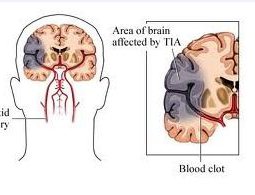
In Nepal where infectious diseases are common, for some years now we have been seeing a tremendous rise in non- infectious diseases as well. Besides cardiovascular illnesses like heart attacks which have increased tremendously in the last decade or so in Nepal, the other area of non-infectious disease increase has been neurological illnesses like strokes and brain haemorrhages triggered by uncontrolled hypertension and smoking. The sad part is that these are preventable illnesses. In addition the fact of the matter is that we are not done dealing with infectious diseases. So, it is truly a double whammy situation.
Forty eight year old Ram Bahadur tried to get up from bed to go to the bathroom at night but found, much to his distress,that he had a mild weakness on the right side of his body. There was also some tingling and numbness on that side. He tried to call his wife but could not quite articulate the words. He felt a sense of panic. His wife was fast asleep; so he decided to wait it out. After about three hours he felt his strength return to his right side, and he was also able to talk to his wife and share this frightening experience.
Ram Bahadur had celebrated Dasain with the usualkhasikomasu, a few drinks, and two or three cigarettes a day during the entire Dasain period. Despite being on blood pressure medicines for years, his pressure had continued to be borderline high, and he had recently told his physician he was not interested in increasing the medicines because he felt the pressure problem did not cause any symptoms.
Next day his doctor told him he had suffered a transient ischemic attack(TIA), although by this time he felt completely well. TIAs occur when the blood flow to the brain is temporarily blocked. In Ram Bahadur’s case it was a relatively brief blockage. TIAs can last from a few minutes to 24 hours. In medical terminology, things that predispose you to a certain disease are called risk factors.
Ram Bahadur’s risk factors for TIA were his borderline high blood pressure and his cigarette smoking ( yes, even 2 to 3 cigarettes a day). High cholesterol level, diabetes, and lack of exercise (he did morning walks) are other risk factors which he did not have. Doctors in Nepal working in busy emergency rooms see this Ram Bahadur scenario repeat itself with a discomforting frequency. Because the usual symptoms of high blood pressure may benon- existent, many patients are averse to taking drugs. Or they opt for partial treatment as in Ram Bahadur’s case which may eventually lead to a catastrophic outcome regardless of exercise and a normal cholesterol. Poor blood pressure control is an independent risk factor for TIAs.
Because TIAs can significantly increase the risk for stroke, it is important to see the doctor as soon as possible even if the symptoms have abated.There are many useful drugs like aspirin which your doctor may prescribe to prevent a full- fledged stroke.

Buddha Basnyat MD
Buddha Basnyat, MD, MSc, FACP, FRCP, Director of the Oxford University Clinical Research Unit-Patan Academy of Health Sciences, Kathmandu.
- Altitude Sickness
- Feb 20, 2018
- Post-earthquake Nepal: The Way Forward
- Dec 13, 2015
- The Annapurna Sanctuary
- Nov 29, 2015
- Diarrhea at the Summit
- Nov 08, 2015
- Altitude Sickness ( AMS, HAPE, HACE)
- Oct 15, 2015
















